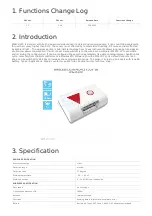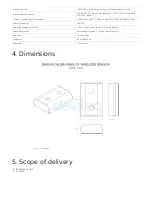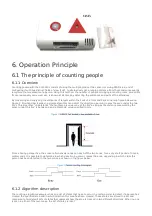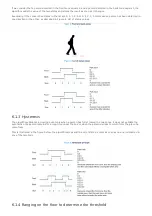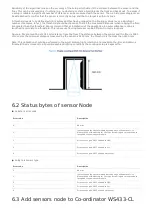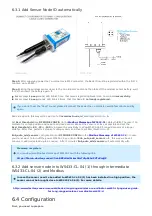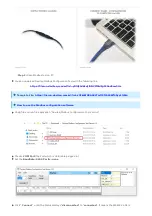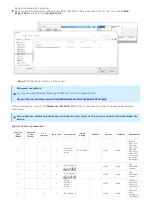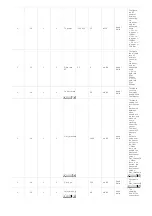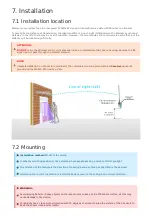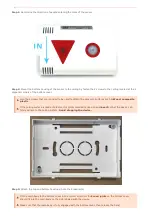
If we consider that a person detected in the front zone equals 2, and a person detected in the back zone equals 1, the
algorithm adds the value of the two states and stores the result as soon as it changes.
Eventually, if the consecutive states in the list are 0, 1, 3, 2, 0 or 0, 2, 3, 1, 0 this means a person has been detected in
one direction or the other, as described in Figure 4. List of status values.
The algorithm validates a crossing event only when a person has fully crossed the two zones. It does not validate the
event when the person remains for a long time under the FoV or when the person decides to return from the place he
came from.
This is illustrated in the figure below: the algorithm stops and the list of states is reset as soon as no-one is detected in
any of the two FoVs.
6.1.3 Hysteresis
6.1.4 Ranging on the floor to determine the threshold


